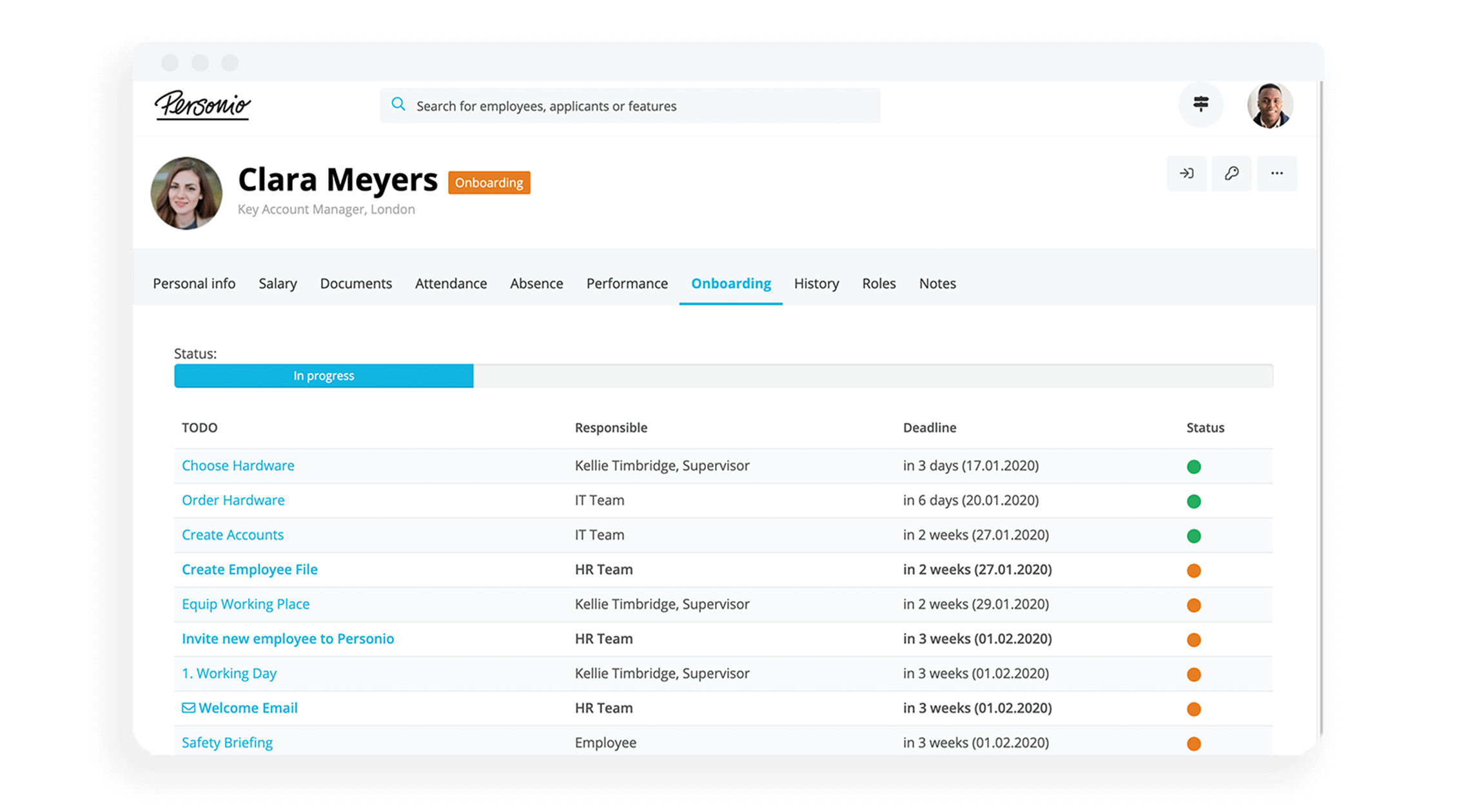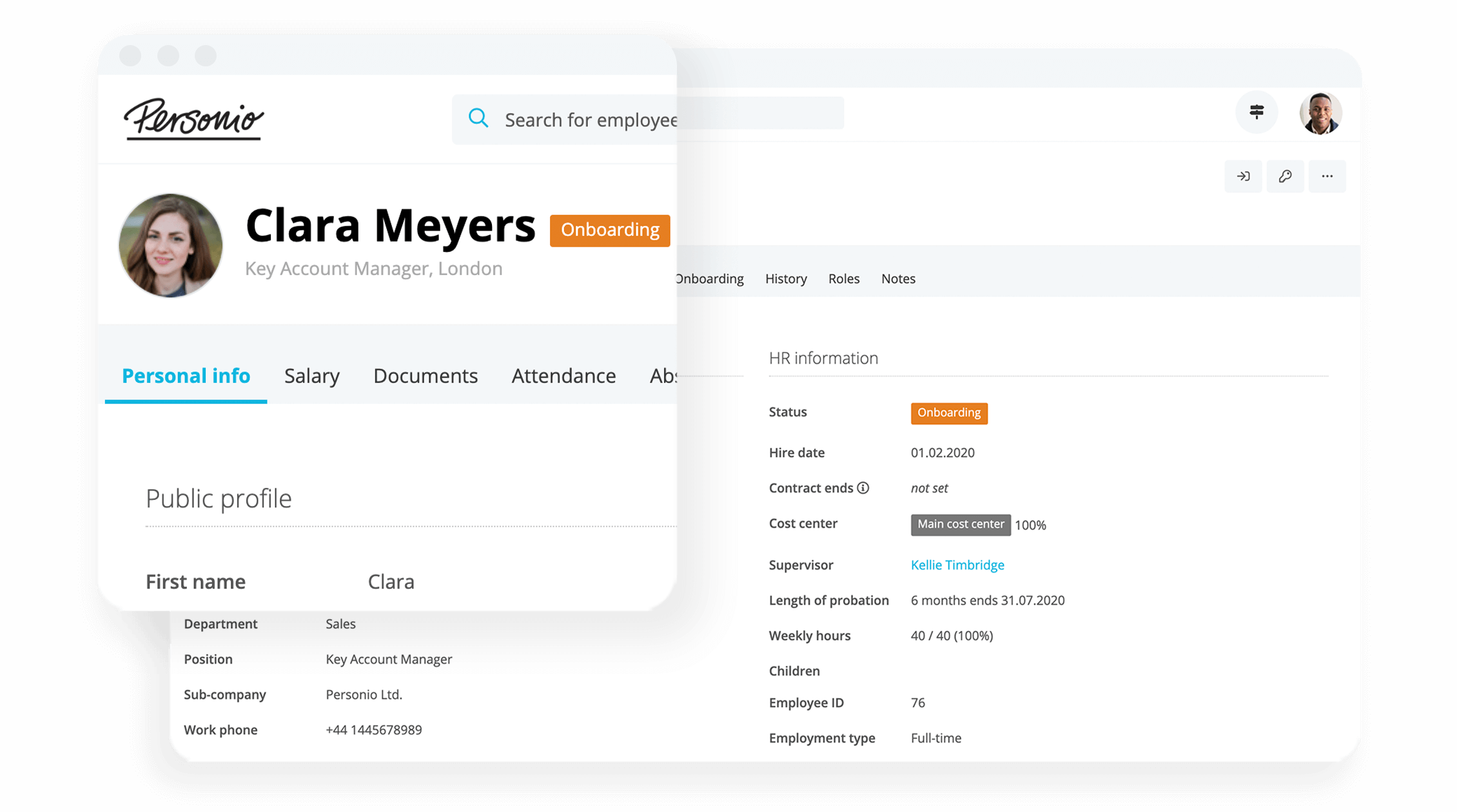Need an induction checklist? While some may call it onboarding, others call it an introduction, and it basically means to prepare employees to succeed from their very first day of work.
But, what does that entail? In this article, we offer a helpful employee induction checklist that, when paired with an automated onboarding process, can ensure employees are off to a flying start.
Download our induction and onboarding checklist to get started.
Contents
What Is Employee Induction?
Why Does Employee Induction Matter?
What Is Induction Day?
What Must Be Included in an Employee Induction?
Should You Have An Employee Induction Program?
Induction Checklist: What To Include When Onboarding
5 Things to Watch Out For In An Employee Induction
Turn Induction Checklists Into Automated Onboarding
What Is Employee Induction?
An employee induction is the process an employee goes through when they first join a company. While certain things have to be included in an induction, like showing employees where the fire exits, bathroom, and kitchen are, for both practical and legal reasons, an employee induction also provides the opportunity for employers to make a great first impression.
Why Does An Induction Checklist Matter?
A great induction helps employees adjust to their new working environment and feel like part of the team. Whether you call it onboarding, orientation, or even socialization, these first few moments, hours, or days can set a critical framework for future endeavors. After all, first impressions can last a lifetime.
A good induction can have a positive effect on employee engagement, staff absenteeism, turnover, and their perception of the company’s employer brand.
A well-thought-out induction helps employees settle in and feel comfortable; helps new team members build good relationships from day one; and sets expectations for acceptable behavior, cultural norms, ethics, and ways of working.
What Is Induction Day?
An employee induction can take place over a few hours, a full day, or, even a week – depending on the complexity of their job role, the number of people and systems they interact with, and the nature of their work. An induction day is often, but not always, the first day of someone’s employment with a company.
However, when companies have a lot of new joiners, they sometimes choose to make an official ‘induction day’ later than their first day. When this happens, someone will still need to take employees through the things they need on day one, but the employee gets further information (usually about the employers’ processes and systems) later.
This is why an induction checklist can prove to be so invaluable. When you have a group of people starting all at once, or even on the same day, it helps to have a process that is regimented, makes sense, and can make a difference for employees.
Prepare Your Team For An Amazing Induction Day
Onboarding with Personio starts with templates that collect all the tasks your HR team needs for an effective onboarding process. Then, everyone is reminded of what and when they need to do things.
What Must Be Included in an Induction Checklist?
When thinking about creating a great employee induction it helps to answer the traditional five W and one H questions: who, what, when, where, why, and how.
Who?
As part of an employee induction, it’s important to explain who they will be:
- Working with directly
- Reporting to
- Working with indirectly
- Interacting with occasionally (for example, C-level executives)
One helpful way of answering the ‘who’ question is by providing an employee with an organization chart – either in a physical, or digital format.
Discover what it takes to craft a great org chart in this helpful article.
What?
What will an employee actually do on a daily basis? This question is basically answered by their job description but, no matter how good their job description is, an employee will still need to know what’s expected from them, what actual tasks need to be done, when and how.
This guide to job descriptions may also prove helpful. Click here to read more.
When?
Hopefully, an employee already knows what their working hours, start times, and end times are before they begin their first day of work. But it is important to double-check this and to let them know when they can take breaks – including lunch breaks. The last thing you want is for a new employee to go home, ‘hangry,’ at the end of day one because no one told them it was okay to take a lunch break!
Where?
In the past, the ‘where’ of an employee induction was fairly obvious. They work at a specific office location (unless their job requires them to travel) and sit at a specific desk. By the end of an employee induction, they must know where to go to the bathroom, how to find the emergency exits, and be able to identify the location of the kitchen and any other office facilities they need to use.
But these days, with hot-desking, remote working, and even remote onboarding, addressing the question of ‘where’ is somewhat more complicated.
Read our complete guide to hybrid working’s most pressing questions right here.
Why?
Addressing the question of ‘why’ can be tricky in an employee induction, but having a strong, clear, and clearly-defined culture can help. In this case, a company’s core values help employees reduce uncertainty when making decisions so they can concentrate on doing their jobs.
By explaining how it’s important for employees to act, sharing things you’re proud of, and putting new employees in touch with great cultural ambassadors, it helps them feel part of that culture more quickly. It also reduces uncertainty and, hopefully, gives employees a good feeling that makes them want to come back again the following day, week, month, and year following.
How?
It’s not always possible to explain how to do the job in full on their first day. So, rather than trying to cram all this information in on their induction day, it’s better to give employees a plan of how to get started, and then help them along the way, regardless of what questions they have.
An induction checklist is important here, because all of the tasks may not be covered in the first day. This way, you know what has been covered, and what is remaining, for an employee.
Remember: It’s often nerve-wracking for new employees to ask questions, particularly if they feel like the questions are foolish on their part. But, helping them through this learning curve will pay dividends later.
Use Our Induction Checklist Today

Should You Have An Employee Induction Program?
In essence, yes. How complicated you choose to make it is up to you but, please, whatever you do, make sure that employees have the information they need to do their jobs from day one!
Induction Checklist: What To Include When Onboarding
The following seven sections cover the essentials you must include when onboarding someone.
1. Get The Personal Details Right
Make sure an employee has signed and returned their contract (if this hasn’t already been done before they start) and check all their official working information including:
- Personal contact details
- National Insurance (NI) number
- P45
- Work eligibility, including visa, or passport information (if appropriate)
- Background checks (including CRB checks)
- Bank account details
2. Make Sure They Know Your Policies
Share your employee policies and procedures with them – including information on any portals, noticeboards, or other locations like Slack, or your intranet.
This should include:
- Company culture information
- Policies relevant to them
- Procedures they must follow
- Where to find an employee handbook (if you have one)
3. Cover The Essentials
At a minimum, it’s important for your employees to know about their working terms and conditions. Even if this is included in your policy, handbook, or employee manual, be sure to point out the following and make sure they understand this information and know where to find it in the future.
These essentials are:
- The facilities you provide
- Their working hours
- Expected breaks and holidays
- Paternity, maternity, or shared leave
- What happens when they’re sick
- What happens with their pension
- Who their line manager is
- What to do if they have queries, comments, complaints, or need help
4. Keep Them Safe
It is a legal requirement in the UK to ensure relevant Health and Safety information is covered as soon as an employee starts.
This includes:
- Any precautions they must take to keep them safe
- Any training, or Personal Protective Equipment (PPE) they might need to do their job safely
- What they should do if there’s an accident, emergency, or in case of a fire
5. Get Them Set Up & Ready To Work Properly
There’s nothing more frustrating than starting a new job and not being able to work! At the very minimum, an employee must have access to the locations, tools, and equipment they need.
Depending on the nature of their work this can include providing:
- Laptops and a mobile phone
- Access to your work networks (including wifi passwords and relevant logins)
- Entry to the building (a key, key code, fob, or passwords)
- Instructions on how to get into and use any social networks (e.g. Slack / Messenger etc.)
6. Set The Right Tone
It is absolutely critical that, from induction day, employees feel welcomed into your organization. When getting them started, though, you might want to:
- Arrange a tour of the company’s facilities
- Tell them about the company’s vision, mission, and values
- Provide printed documents so they don’t forget critical information (or give them a way to write the key information down – branded company pens are a nice touch)
- Set up meetings for them to meet key people they’ll be working with
- Tell them about training – and potentially book it in
- Assign an ‘onboarding buddy’
- Arrange regular ‘check-in’ meetings with their boss
- Introduce them to the wider team by email
Click here for a collection of introduction emails to colleagues (with templates)!
7. Help Them Know What Success Looks Like
This goes beyond discussing their roles and responsibilities. It also helps enormously to explain your company’s standards and expectations, where to go when they have questions, and, if possible, to give employees a plan for how to get started with the job they need to do, and even what it means to be a great employee at your organization.
Try Out Onboarding With Personio Today
Ready to see how onboarding looks within Personio? Or, maybe you’re ready to get hands-on with things and try it out for yourself. Click the button below to see things in action by starting your free trial today.
Should Every New Employee Have An Induction?
In short, yes. It’s so important to get started the way you mean to continue. Whether it takes an hour, a day, or a week to get an employee up and running, you really should have a proper induction day or process!
5 Things to Watch Out For In An Employee Induction
As we’ve explained, a great employee induction is good for both employees, as well as your company. That’s because happy employees are more likely to stay with you and be more productive. But, it’s just as important to keep these five red flags in mind before induction day rolls around:
- Don’t give them too much information to process all at once. Allow them to take the time they need and to ask questions.
- Don’t give them too much to do immediately. But, don’t let them sit around with nothing to do, either.
- Don’t expect them to get working from day one: They will need time to figure out how your systems and processes work before you can expect them to be effective.
- Don’t leave them on their own for too long without support.
- Don’t set unrealistic expectations. But do help them know what will help them get up and running soon and what ‘good work’ looks like.
Turn Induction Checklists Into Automated Onboarding
Having a seamless employee induction is far simpler when the whole process is put together ahead of time. Using Personio’s onboarding feature, you can ensure that all of your tasks are in a row, that everyone is made aware, and that an employee has an amazing first day in their new role.
Send Automated
Welcome Emails







